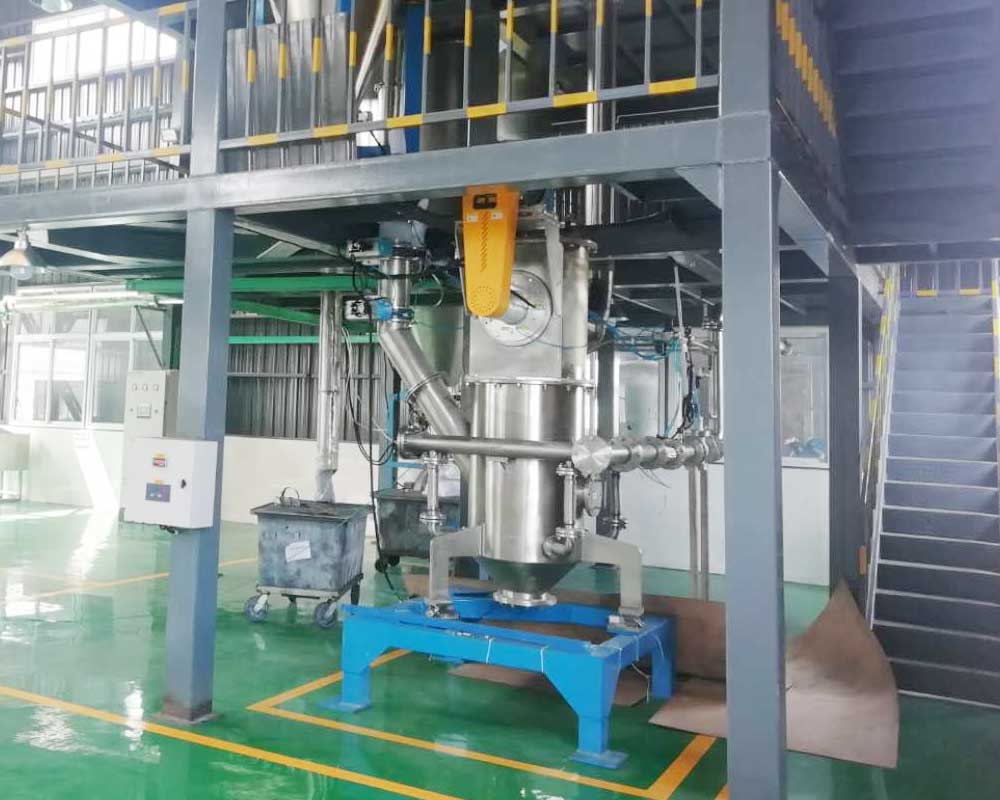The jet mill can ensure the collection rate and yield of ceramic pigments
Ceramic colors refer to powdered metal oxides and other mixtures used for ceramic glazes, which are used to decorate ceramics, porcelain and terracotta, and are also used in porcelain enamels for decorative metalware. When it is in powder form, most of the ceramic pigments are off-white; although the particle size requirements of the pigments are not explicitly specified, it is generally required to pass a 300-mesh sieve. Insufficient pulverization will make it difficult to use due to uneven particle size, and lack of hiding power, resulting in spots after firing. On the contrary, if the crush is too fine as dust, it will not be fully fused in the glaze and become the cause of glaze rolling. Compared with other crushing equipment, the product morphology, particle size distribution, purity and other aspects obtained by the jet mill have obvious advantages.

The ceramic pigment jet milling equipment strictly controls the distribution of particles to ensure a qualified collection rate and yield rate. The complete production line is our company’s mature technology, with stable equipment performance, constant operating parameters and reliable quality.
Equipment characteristics of ceramic pigment jet mill
1. Avoid impurities doping into the materials to ensure the purity of the materials.
- Without water, washing, and completely dry production, one-time production can obtain fine powder materials with better particle size distribution and pollution-free, and the single-number finished product rate can reach more than 75%.
- Complete, stable and uniform flow field control technology; constant gas-solid concentration ratio design technology in the crushing cavity to ensure the stable and long-term operation of the system.
- Reasonable flow field design and special wear-resistant treatment for easy-wear parts greatly reduce the wear of the equipment, extend the service life, high classification accuracy, more accurate cutting particle size, lower speed required, and long service life.
2. In a fully fluidized state, an excellent spherical particle shape can be obtained; qualified micropowders are immediately classified to avoid excessive crushing. The company’s unique frequency conversion feeding system helps to disperse materials, ensure continuous, uniform and stable feeding, and help product particle size control.
3. The complete and stable flow field established by the high-efficiency and high-precision classifier can strictly limit the generation of large particles, and obtain an excellent particle size distribution and a high and narrow particle size range. In particular, the core competitive advantage of more thorough extraction and good stability of fine powder has been widely recognized by the industry.
4. Once the operating parameters of the equipment are adjusted and fixed, the operation is stable, and there is no difference or change in the long-term continuous startup.
5. Fully enclosed negative pressure operation, low temperature crushing, high purity operation, no dust pollution, system emission <5mg/m3. The crushing chamber is equipped with an automatic slag discharge device, which can automatically remove the hard-to-grind particles and impurities in the material. It has the function of breaking up and dispersing agglomerated materials. Large flow of air means cooling and grinding, which can be used for processing heat-sensitive materials without deposition problems.
Ceramic pigment jet mill is suitable for typical materials: ceramic pigments (glaze, frit, etc.), ceramic raw materials (feldspar, porcelain clay, bauxite, etc.), ceramic raw materials (clay, gangue, etc.), special ceramics, diamonds , Green (black) silicon carbide, brown (white) corundum, cubic boron nitride, garnet, zircon sand, quartz sand, tungsten carbide, mullite, refractory materials, etc…
